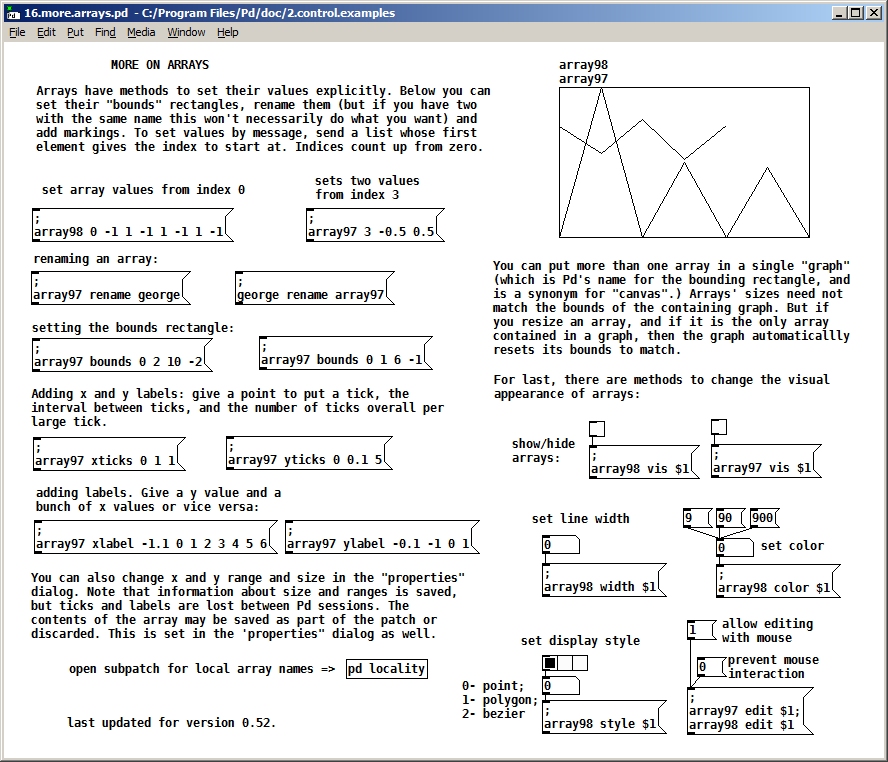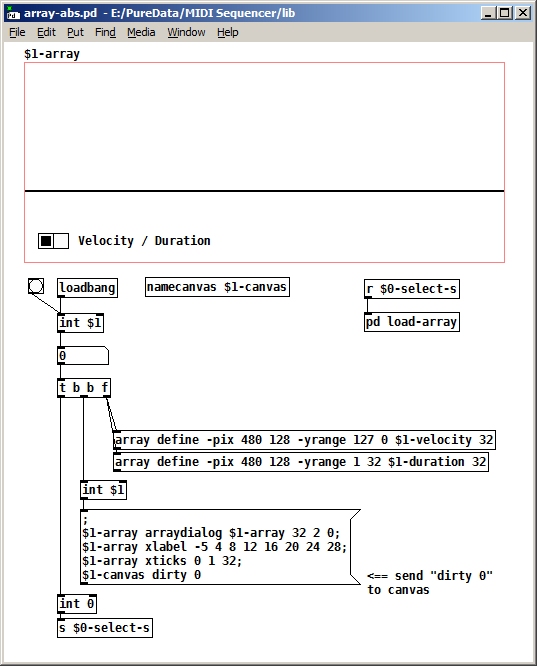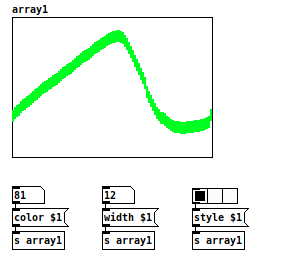I decided to redesign the thing, taking a different approach. Rather than try to display two arrays in the same graph, I defined one array (named "$1-array"), the only one which actually gets displayed, using the Put menu. Then I defined two other arrays (named "$1-velocity" and "$1-duration") using [array define], and a horizontal radio button to allow the user to select which of the two arrays to display. When the user clicks on one of the radio button selections, it saves the current contents of $1-array and then copies the contents of the selected array into $1-array.
It works the first time I open the patch, but when I go to close it, PD asks me if I want to save my changes (even though I didn't make any changes, except to the data in the arrays. I don't have "Save contents" checked either. If I say "No", I can open the patch again and it still works. But if I say "Yes", it replaces the original name of the displayed array ("$1-array") with the actual number (for example, "1150-array", as in the screen print below) inside the patch. I'm not sure why it's doing this, or if it's expected behaviour. It doesn't over-write the names of the other two arrays ($1-velocity and $1-duration) inside the patch, though. Any ideas?
The whole thing is getting a little complicated, so I've uploaded the parent patch ("test-array-abs.pd") and the abstraction containing the arrays ("array-abs.pd"). This is the line in "array-abs.pd" that gets changed if I say "Yes". Of course, I could try to remember never to say "Yes", but that's a bit much to ask of the user, I think. And it's kind of annoying to have to answer in the first place.
Before:
#X array \$1-array 32 float 2;
After:
#X array 1161-array 32 float 2;
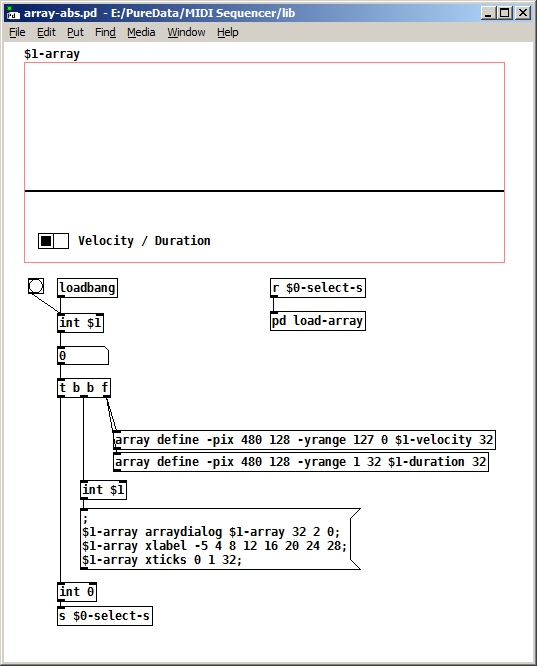
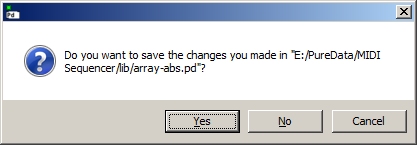
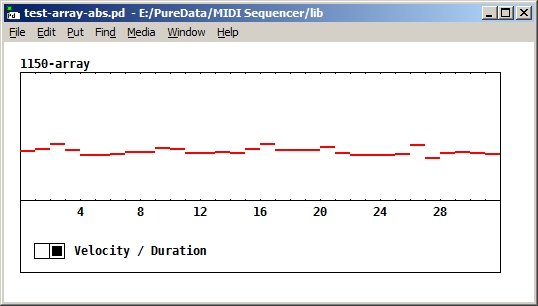
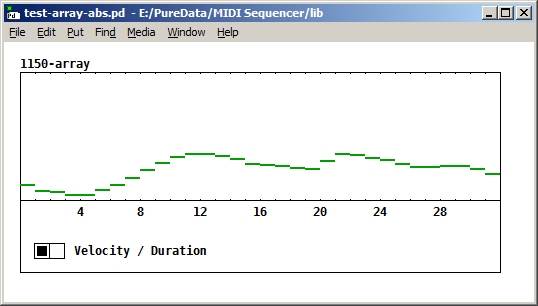
test-array-abs.pd
array-abs.pd
